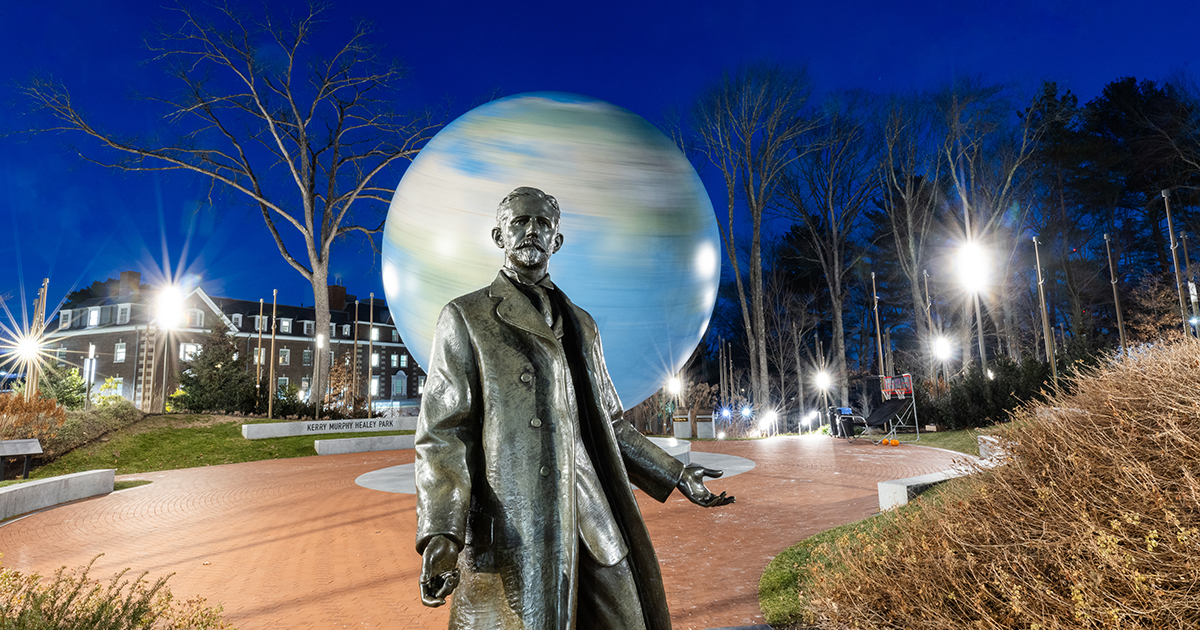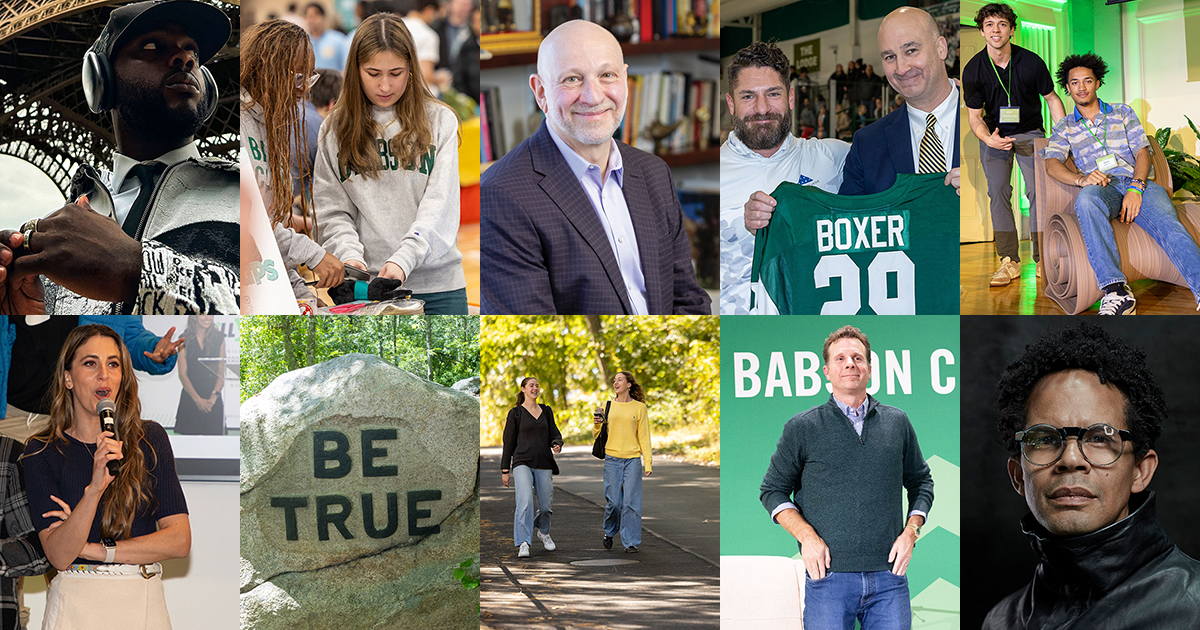The Role of Research: To Learn, to Solve, to Inspire
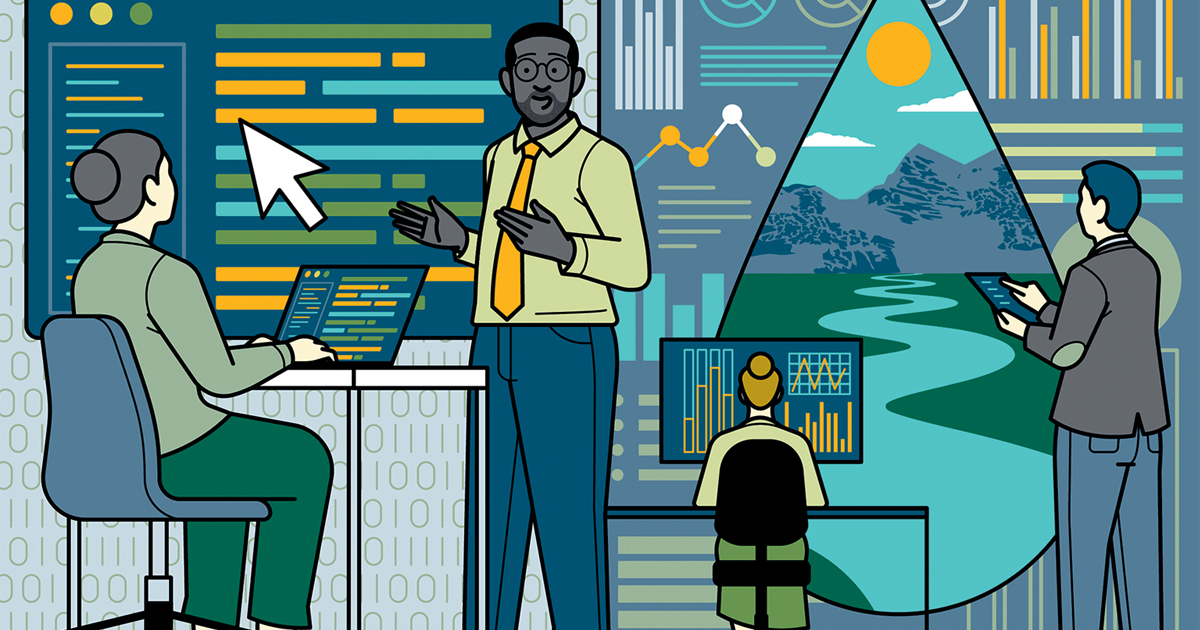
Taking a peek into the unknown is the job of professors. With their research, they ask the big, knotty questions, the questions at the limits of human understanding for which answers are not easily found.
“It is challenging,” says Joanna Carey, associate professor of environmental science and the Debi and Andy Butler Term Chair. “Basically, our job is to figure out knowledge that nobody knows yet.”
Babson College may not be a large research institution, but its professors still produce a sizable amount of research in a wide range of fields, from medicine and the environment, to history and culture, to technology and innovation, to business and entrepreneurship. In this article, five Babson professors discuss their diverse work, giving a greater appreciation of the breadth and significance of research at the College.
BABSON MAGAZINE: Read the complete Summer 2024 issue.
Their research, along with that of their colleagues, flourishes in a supportive environment. The College helps fund research endeavors and trips to academic conferences, while giving professors the freedom to pursue their scholarly interests.
Alumni donors, meanwhile, have funded numerous term chairs, which allow professors to spend more time on their research, and professors at the tight-knit school frequently collaborate across disciplines. “We challenge each other to solve problems in different ways,” says Dessislava Pachamanova, professor of analytics and computational finance and the Zwerling Family Endowed Term Chair.
The end result is research that influences and inspires, that makes an impact around the globe, that helps us understand the world and our place in it.
Professors’ research also makes its way into the classroom. “The research they’re doing outside of the classroom informs and strengthens their approach within it,” says Babson President Stephen Spinelli Jr. MBA’92, PhD. “That value proposition enhances our academic rigor and ensures Babson remains at the forefront of emerging trends in entrepreneurship and beyond.”
‘I Have Always Been Fascinated by Nature.’
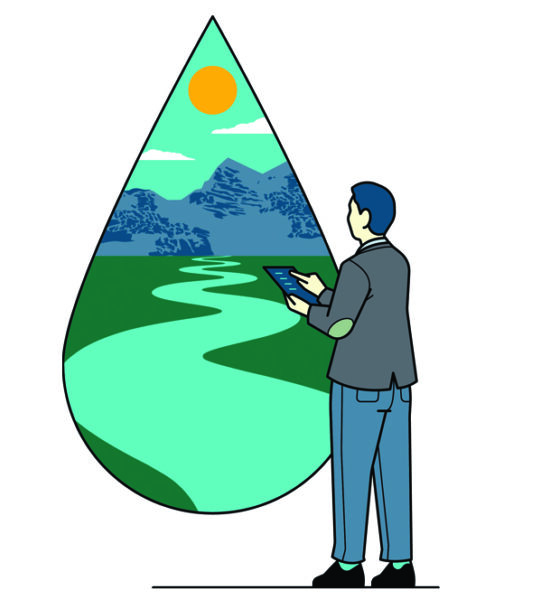
Imagine a stream trickling down a mountain, as it makes its way to a river, which widens as it reaches the sea. That water is majestic and immense, and it carries with it many things on its journey. “Every time I see a river, I think, ‘That’s a lot of material being moved,’ ” says Joanna Carey, associate professor of environmental science and the Debi and Andy Butler Term Chair.
One of those things in the water is silicon, the second most abundant element in Earth’s crust and a frequent subject of Carey’s research. Silicon moves from the crust, into plants, into rivers, and finally, into the ocean.
Following that path and examining watery places such as rivers, marshes, and estuaries, Carey’s research demonstrates how human activity is causing drastic changes in the amount of silicon as it cycles through the world. Those changes have a story to tell about land use, about the food chain, about carbon dioxide levels, and about our planet as it warms.

Consider the microscopic but mighty diatoms, for instance, an abundant alga that requires silicon to grow. What will the changing levels of silicon mean for these organisms responsible for more than 20% of the oxygen produced every year on Earth?
“They are really important,” Carey says. “Their importance on a global scale can’t be overestimated.”
For the last few years, Carey has led a team that created and examined the largest data set in the world on river silicon chemistry with funding from the National Center for Ecological Analysis and Synthesis. She’ll soon be looking at data from all seven continents for a project funded by the United States Geological Survey.
To be a scientist now, trying to bring a clearer understanding of climate change’s formidable and far-reaching impact, is to perform critical work.
“It is very fundamental science,” Carey says. “There is an urgency in what we are doing.”
Much is at stake, including the future of the students she teaches in the classroom. “This is an issue they will deal with their whole lives,” Carey says.
‘Research Has Always Felt Natural to Me.’
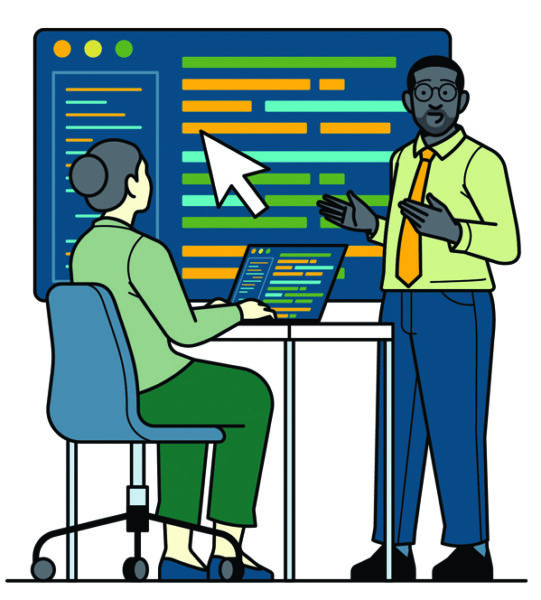
Technology evolves fast. For those in the workplace, that speed can feel overwhelming. “There is a lot of risk of people falling behind,” says Ruben Mancha, associate professor of information systems.
Those workers falling behind are a major concern of Mancha’s research. He looks at how organizations can adopt technology and transform how they operate in a responsible way, by considering the many human implications of the changes they’re implementing. “What is different about my framing is that responsibility,” he says. “It’s focused on the human side. It’s a people-first approach.”
New tech, such as an artificial intelligence tool like ChatGPT, actually can have a positive effect on employees’ workdays, taking on tedious tasks and freeing them to focus on more essential matters.
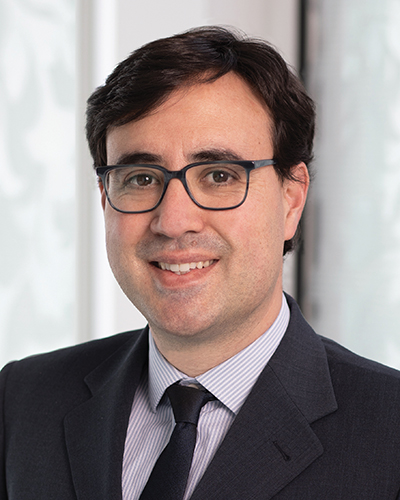
This benefit only works, though, if workers are confident using these tools. The line between those who are tech literate and those who are not is a stark one. “Those who can work with the technology will use it,” Mancha says. “Those who can’t will be replaced.”
In his research, Mancha examines two ways that organizations can not only guide employees through technological changes but also empower them. One way is by introducing them to low-code development platforms, which offer a much easier way to code, thus enabling many more employees to become developers. The second way is to launch a sustained and effective program for upskilling, creating a workforce that is competent and confident with tech.
Such measures do more than train an employee in the latest and greatest. They also change a workforce’s mindset. Give employees a new program they know how to use, and suddenly they have greater power to transform and innovate. “It changes how people see themselves and how they use technology,” Mancha says. “It’s about bringing the innovation culture to the enterprise.”
Mancha hopes decision makers in business will take his research to heart, and he’s excited to share it with students in the classroom. Before becoming a professor, he worked as a lab scientist in biotech. Research is something that comes naturally to him.
“It is my way of thinking,” he says.
‘I Like to Solve Problems.’

Unfortunately, the work of the International Committee of the Red Cross is seemingly never-ending. The essential organization operates in war zones—in Ukraine, in the Gaza Strip, and in conflict areas far removed from the world’s spotlight. “There are fires everywhere,” says Dessislava Pachamanova, professor of analytics and computational finance and the Zwerling Family Endowed Term Chair.
The work is not only relentless, but it is also costly and logistically challenging. Because of the alarming number of conflicts around the world in recent years, the organization faced a substantial funding shortfall. As a result, a team composed of Pachamanova, other researchers, and supply chain coordinators within the organization sought to determine how to best allocate medical supplies for where they need to go.
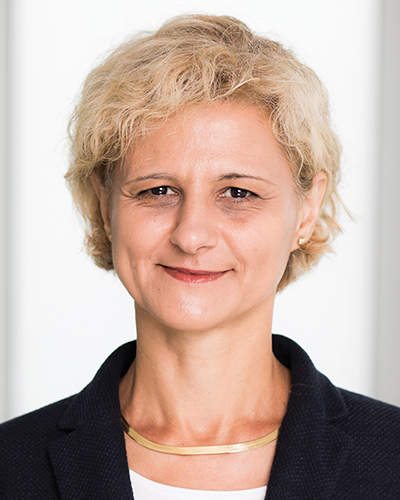
This was a tricky thing to figure out. Ship too many supplies, and costly medications may sit unused and expire. Ship too little, and people may not receive the critical, lifesaving supplies they need. For more than a year, Pachamanova and the group looked at the issue.
Ultimately, they developed an inventory management decision support system that was rolled out across a dozen medical distribution centers in Africa, the Middle East, and Ukraine in 2023. By reducing the inventory levels of medical supplies by nearly a quarter with virtually no negative effect on service, the system saved the Red Cross a significant amount of money while facilitating a collaborative planning process across the organization. “The Red Cross considers it a great success,” Pachamanova says.
This is exactly the type of result she is seeking with her research. “I am looking for impact. That is the main thing that drives me,” says Pachamanova, who has applied her expertise in optimization, analytics, machine learning, and simulation to fields as diverse as finance, logistics, and health care.
Pachamanova wants to incorporate her experience working with the Red Cross in a new Babson class she is designing. “I want to introduce students to this kind of experience,” she says, “where you go in, you understand the big problem, but identifying how to start a solution is very hard, and you won’t know where you’ll end up.”
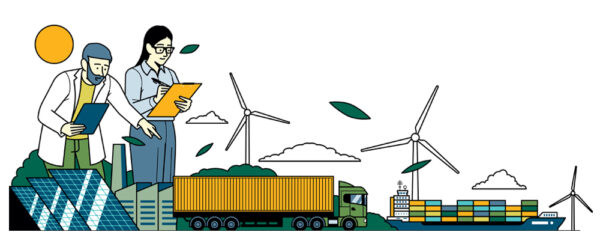
‘I Like Asking Questions and Looking for Answers.’
A company is not an island. Its actions are not secluded. Rather, they ripple outward. A company’s supply chain, its partners, its manufacturing, its customers—all of these relationships, all of these connections, operate within one intertwined system that has an impact on communities and the environment.
The research of Sinan Erzurumlu, professor of innovation and operations management, concerns itself with these systems in which organizations operate. Lying at the intersection of business, society, and the environment, his work focuses on how companies can make decisions that are both sustainable and innovative.
When looking at a company’s actions in his research, Erzurumlu typically asks a direct question: Who does this benefit? “It could benefit a community. It could benefit the planet,” he says. “That perspective drives me a lot.”
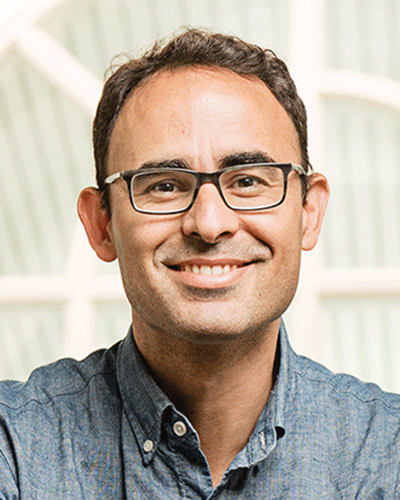
The goal is to build a more sustainable future, but talking and researching about sustainability, such an immense, complex, and daunting challenge, is not easy. “I think sustainability is a human mindset problem,” Erzurumlu says. “It’s not just reducing carbon emissions. It’s about changing that mindset. We need to make that transition to a sustainable future. Convincing people to do that is a hard job.”
Large organizations also can’t simply transition into sustainable businesses overnight. Making integral changes is like trying to turn a cargo ship. “It’s a process,” Erzurumlu says. “They can’t make the turn immediately.”
In one recent research article he co-authored, Erzurumlu looked at the systems-thinking approach that three companies—retailers of household products, fashion, and beverages, respectively—took to sustainability. The companies, among other measures, sought to limit the water they used in their operations, reduce the use of hazardous chemicals, and collect waste to recycle and remake into new products.
He hopes other companies can learn from their efforts. He also hopes such research will give his students real-world insights about sustainability. “I think teaching is as important as being a researcher,” he says. “I see the classroom as an outlet for my research. Teaching about my research is an extension of my scholarly identity.”
‘Research Is a Great Opportunity to Better Understand Hard Problems.’

Hospitals are full of caring, smart people striving to deliver the best treatment possible. Helping them with that mission is what Wiljeana Glover tries to achieve in her research.
To conduct her research, Glover likes to leave her desk and work on site, embedded with those on the front lines of health care. “When I can, I am physically going into hospitals, observing, getting to know clinicians,” says the Stephen C. and Carmella R. Kletjian Foundation Distinguished Professor of Global Healthcare Entrepreneurship.
“That is fun for me and helps me understand how they do the work they do.”
Glover often works with hospitals and clinics to understand how they identify and implement improvements, whether a new procedure or innovation. The goal is to make sure that these improvements support patients equitably. Equity in care, for people of color, for women, can remain elusive.

Clinicians typically see her as a partner. “In some cases, they see me as part of their innovation or improvement team,” Glover says. “They appreciate the insights they are receiving along the way.”
In a recent research article she co-authored, Glover looked at quality improvement efforts at medical centers and how those organizations can make a sustained commitment to addressing equity. Data measurement, team composition, and the need for ongoing actions were all examined. “How do we not think of equity as a one off?” Glover says. “How do we build in equitable practice? How does it become part of the way we do things?”
Glover also serves as the founding faculty director of Babson’s Kerry Murphy Healey Center for Health Innovation and Entrepreneurship. In addition to studying equity, the center’s affiliated faculty conducts research on healthcare startups, the impact of artificial intelligence and analytics, and entrepreneurial training for clinicians and scientists.
Glover praises the spirit of collaboration she sees in her fellow faculty members, who share ideas with one another and work together on research. “It is one of my favorite things about doing research at Babson,” she says. “It really is a part of the secret sauce of research here.”

